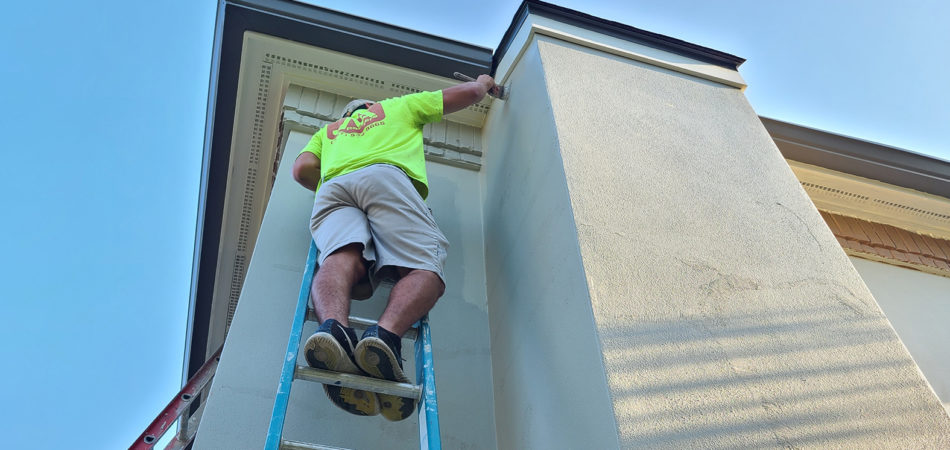
Lafayette 337-329-8445
New Orleans 504-229-2083

Lafayette 337-329-8445
New Orleans 504-229-2083

A great way to update the appearance of your business is to have the exterior painted. There are many different types of exterior surfaces, and not all of them are suitable for painting. A professional painter will be able to tell you what the case is for your business.
When painting any exterior surface, it’s important to make certain of a few things:
If your exterior needs any repairs, the repairs must be completed before painting. It’s important to replace things like dried-out or damaged caulk. Cracks or holes in the surface should be filled as well.
This way, the paint has an even, undamaged surface to adhere to. Without repairing these situations, the damage can get worse and be harder to repair.
Typical surfaces that can be painted include wood, siding, and masonry.
Wood is fairly standard for painting. Prep the surface carefully, ensuring that the surface is clean, undamaged, and free of loose paint and debris, and paint away!
Aluminum siding and vinyl siding can both be painted.
Vinyl is probably the easiest of all surfaces to paint, as all it tends to require is a good cleaning. Use a high-quality acrylic latex-based paint, not an oil-based paint. Don’t scrape or sand the surface, as you may damage the siding.
Aluminum siding is a bit trickier. When the bare metal is exposed, it begins to oxidize, so it’s important to remove any built-up oxidation with steel wool before painting. If there is exposed metal, it’s important to prime the surface to prevent additional oxidation.
When priming and painting, it’s best to use acrylic latex-based paints. These adhere evenly and mimic the original texture of the siding, be it smooth or textured.
Brick, stucco, and concrete blocks are all paintable surfaces.
The key to masonry is age. Young masonry may retain moisture from its original mixing or have higher levels of alkalinity. These both create challenges when painting, as it’s important to always have a dry surface with a lower alkaline level.
Time and natural weathering will take care of both of these issues, but if the surface must be painted right away, use an alkaline-resistant primer/sealer. Then paint the surface with acrylic latex-based paint.
Older masonry has efflorescence to contend with. Make sure any efflorescence is removed, and the areas where it tends to accumulate are sealed to prevent any more from building up.
JMA Painters explains which exterior surfaces can be painted and how to achieve the best results. Get expert advice for your painting project. Contact us today for a free consultation!